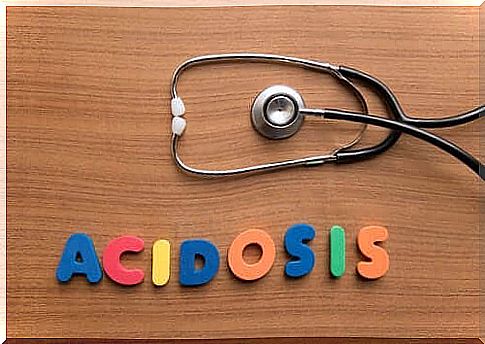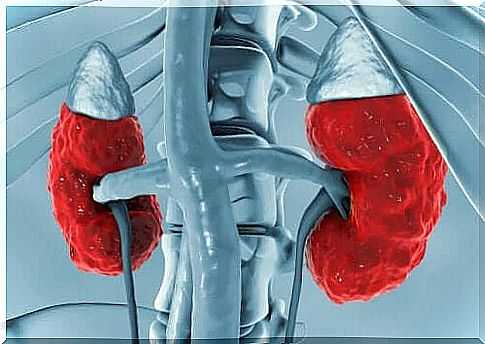Renal Hyperchloraemic Acidosis: Causes, Symptoms And Treatment

Renal hyperchloraemic acidosis is caused by excessive loss of sodium bicarbonate in the body. In this condition, the kidneys are also unable to remove acids from the body in a sufficiently efficient manner.
It is characterized by a decreased ability of the renal proximal tubules to absorb sodium hydrogen carbonate from the filtrate produced by the capillary glomerulus, which in turn leads to hyperchloraemic metabolic acidosis.
The incidence of renal hyperchloraemic acidosis is unknown. However, type 2 (proximal) renal tubular acidosis, or pRTA, caused by some drugs is relatively common, whereas isolated hereditary renal hyperchloraemic acidosis is very rare.
Symptoms of renal hyperchloraemic acidosis

The symptoms of renal hyperchloraemic acidosis depend on the underlying disease or condition. For example, this condition can cause the patient to breathe faster, i.e., hyperventilation, fatigue, or confusion. In the most severe cases, it can lead to shock or even death.
Renal hyperchloraemic acidosis begins in highly alkaline urine due to unabsorbed sodium bicarbonate. In addition, renal hyperchloraemic acidosis leads to growth retardation and decreased bone mineral density.
In some cases, hypocalcaemia, ie lower than normal blood calcium levels, may also occur, which in turn can sometimes lead to intermittent symptoms of paralysis. Rice disease in children and osteomalacia in adults, on the other hand, are due to a lack of absorption of vitamin D and phosphates.
Causes of renal hyperchloraemic acidosis
Renal hyperchloraemic acidosis can be caused by renal diseases such as renal tubular acidosis (RTA), which can be either distal (dRTA) or proximal (pRTA).
It can also occur in poisoning conditions caused by an overdose of either acetylsalicylic acid, ethylene glycol, or methanol. In addition, renal acidosis can occur if the body dries out very severely.
Renal hyperchloraemic acidosis can be either acquired or covertly (recessive) inherited (in most cases) and in some cases also predominantly (dominant) inherited. Acquired renal acidosis is due to a mutation in the SLC4A4 gene (4q13.3).
The predominantly inherited acidosis is due to a mutation whose gene is not yet known. The proximal tubule absorbs about 80 percent of the filtered sodium bicarbonate load, but a malfunction in its function results in the loss of sodium bicarbonate.
In addition, some medications may be the cause of acquired renal acidosis.
Diagnosis of renal hyperchloraemic acidosis

Unlike in patients with distal renal acidosis, in proximal renal acidosis, the patient’s urinary pH may drop below 5.5.
In order to diagnose the disease, it is necessary to show that the absorption of sodium bicarbonate is deficient. The diagnosis can be confirmed by a sodium hydrogen carbonate evaluation test.
In a sodium bicarbonate evaluation test in a patient with renal acidosis, a significant increase in both urinary sodium bicarbonate excretion and urinary pH is observed, as plasma sodium bicarbonate levels rise above the renal threshold.
The possibility of other inherited proximal renal tubular diseases, such as Lowe’s syndrome (a syndrome affecting the eyes, brain and kidneys), Dent’s disease and GLUT2-deficient glycogen storage disease, must also be ruled out.
Laboratory tests may include arterial blood gas analysis as well as electrolyte analysis to confirm renal hyperchloraemic acidosis.
In addition, the patient can have an assessment consisting of a group of different blood tests that measure the body’s sodium and potassium levels, kidney function and other chemicals. In addition, the doctor evaluates the patient’s urine pH, blood and urine ketones, and lactic acid levels.
This set of different tests can also help determine whether the cause of acidosis is a respiratory disorder or a metabolic disorder caused by metabolism.
Treatment of renal hyperchloraemic acidosis

Treatment of renal hyperchloraemic acidosis depends on the cause of the disease. For example, hereditary proximal renal acidosis requires lifetime sodium bicarbonate replacement therapy.
A large amount of sodium bicarbonate is required to perform this treatment to normalize serum sodium bicarbonate levels.
In some cases, thiazide diuretics, such as hydrochlorothiazide, are used in doses of 25 to 50 milligrams per day. The goal of these drugs is to improve the absorption of sodium bicarbonate, which in turn can reduce the amount of sodium bicarbonate needed for treatment.
Plasma calcium levels should also be monitored and in some cases it may be necessary to administer a mixture of sodium and calcium bicarbonate salts.
Normally, medication-induced proximal renal hyperchloraemic acidosis is reversible upon discontinuation of the drug. However, with proper treatment, the prognosis for this condition is good.









